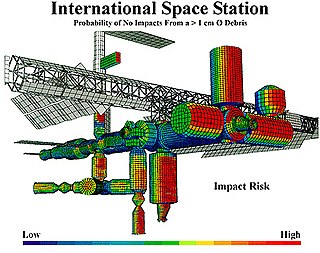External links
- Hourizi, Rachid; Johnson, Peter (2001). "Beyond Mode Error: Supporting Strategic Knowledge Structures to Enhance Cockpit Safety". CiteSeerX 10.1.1.97.1288 .
An automation surprise is an action that is performed by an automation system and is unexpected by the user. A mode error can be a common cause of an automation surprise. Automation surprise can be dangerous when it upsets the situational awareness of a control operator.

Safety engineering is an engineering discipline which assures that engineered systems provide acceptable levels of safety. It is strongly related to industrial engineering/systems engineering, and the subset system safety engineering. Safety engineering assures that a life-critical system behaves as needed, even when components fail.

Automation describes a wide range of technologies that reduce human intervention in processes, mainly by predetermining decision criteria, subprocess relationships, and related actions, as well as embodying those predeterminations in machines. Automation has been achieved by various means including mechanical, hydraulic, pneumatic, electrical, electronic devices, and computers, usually in combination. Complicated systems, such as modern factories, airplanes, and ships typically use combinations of all of these techniques. The benefit of automation includes labor savings, reducing waste, savings in electricity costs, savings in material costs, and improvements to quality, accuracy, and precision.

A controller area network (CAN) is a vehicle bus standard designed to enable efficient communication primarily between electronic control units (ECUs). Originally developed to reduce the complexity and cost of electrical wiring in automobiles through multiplexing, the CAN bus protocol has since been adopted in various other contexts. This broadcast-based, message-oriented protocol ensures data integrity and prioritization through a process called arbitration, allowing the highest priority device to continue transmitting if multiple devices attempt to send data simultaneously, while others back off. Its reliability is enhanced by differential signaling, which mitigates electrical noise. Common versions of the CAN protocol include CAN 2.0, CAN FD, and CAN XL which vary in their data rate capabilities and maximum data payload sizes.

Automatic train operation (ATO) is a method of operating trains automatically where the driver is not required or required for supervision at most. Alternatively, ATO can be defined as a subsystem within the automatic train control, which performs any or all of functions like programmed stopping, speed adjusting, door operation, and similar otherwise assigned to the train operator.
In user interface design, a mode is a distinct setting within a computer program or any physical machine interface, in which the same user input will produce perceived results different from those that it would in other settings. Modal interface components include the Caps lock and Insert keys on the standard computer keyboard, both of which typically put the user's typing into a different mode after being pressed, then return it to the regular mode after being re-pressed.
Actuator Sensor Interface is an industrial networking solution used in PLC, DCS and PC-based automation systems. It is designed for connecting simple field I/O devices in discrete manufacturing and process applications using a single two-conductor cable.

Profinet is an industry technical standard for data communication over Industrial Ethernet, designed for collecting data from, and controlling equipment in industrial systems, with a particular strength in delivering data under tight time constraints. The standard is maintained and supported by Profibus and Profinet International, an umbrella organization headquartered in Karlsruhe, Germany.
Ethernet Powerlink is a real-time protocol for standard Ethernet. It is an open protocol managed by the Ethernet POWERLINK Standardization Group (EPSG). It was introduced by Austrian automation company B&R in 2001.

Vehicular automation involves the use of mechatronics, artificial intelligence, and multi-agent systems to assist the operator of a vehicle such as a car, lorries, aircraft, or watercraft. A vehicle using automation for tasks such as navigation to ease but not replace human control, qualify as semi-autonomous, whereas a fully self-operated vehicle is termed autonomous.
EtherCAT is an Ethernet-based fieldbus system developed by Beckhoff Automation. The protocol is standardized in IEC 61158 and is suitable for both hard and soft real-time computing requirements in automation technology.
A system accident is an "unanticipated interaction of multiple failures" in a complex system. This complexity can either be of technology or of human organizations and is frequently both. A system accident can be easy to see in hindsight, but extremely difficult in foresight because there are simply too many action pathways to seriously consider all of them. Charles Perrow first developed these ideas in the mid-1980s. Safety systems themselves are sometimes the added complexity which leads to this type of accident.
SafetyBUS p is a standard for failsafe fieldbus communication in automation technology. It meets SIL 3 of IEC 61508 and Category 4 of EN 954-1 or Performance Level "e" of the successor standard EN 13849-1.
A description error or selection error is an error, or more specifically a human error, that occurs when a person performs the correct action on the wrong object due to insufficient specification of an action which would have led to a desired result. This commonly happens when similar actions lead to different results. A typical example is a panel with rows of identical switches, where it is easy to carry out a correct action on a wrong switch due to their insufficient differentiation.

A CD-ROM is a type of read-only memory consisting of a pre-pressed optical compact disc that contains data computers can read—but not write or erase—CD-ROMs. Some CDs, called enhanced CDs, hold both computer data and audio with the latter capable of being played on a CD player, while data is only usable on a computer.

Communications-based train control (CBTC) is a railway signaling system that uses telecommunications between the train and track equipment for traffic management and infrastructure control. CBTC allows a train's position to be known more accurately than with traditional signaling systems. This makes railway traffic management safer and more efficient. Metros are able to reduce headways while maintaining or even improving safety.
Automation bias is the propensity for humans to favor suggestions from automated decision-making systems and to ignore contradictory information made without automation, even if it is correct. Automation bias stems from the social psychology literature that found a bias in human-human interaction that showed that people assign more positive evaluations to decisions made by humans than to a neutral object. The same type of positivity bias has been found for human-automation interaction, where the automated decisions are rated more positively than neutral. This has become a growing problem for decision making as intensive care units, nuclear power plants, and aircraft cockpits have increasingly integrated computerized system monitors and decision aids to mostly factor out possible human error. Errors of automation bias tend to occur when decision-making is dependent on computers or other automated aids and the human is in an observatory role but able to make decisions. Examples of automation bias range from urgent matters like flying a plane on automatic pilot to such mundane matters as the use of spell-checking programs.

Shift-by-wire is an automotive concept or system that employs electrical or electronic connections that replace the mechanical connection between the driver's gearshift mechanism and the transmission. Since becoming commercially available in 1996, shift-by-wire has been commonly used in automated manual transmission and has later been implemented in semi-automatic transmission and automatic transmission.

Automation Master is an open source community maintained project. Automation Master was created to assist in the design, implementation and operation of an automated system.
In automation production technology the actions performed by an automated process are executed by a program of instructions which is run during a work cycle. To execute work cycle programs, an automated system should be available to execute these advanced functions.

Workplace robotics safety is an aspect of occupational safety and health when robots are used in the workplace. This includes traditional industrial robots as well as emerging technologies such as drone aircraft and wearable robotic exoskeletons. Types of accidents include collisions, crushing, and injuries from mechanical parts. Hazard controls include physical barriers, good work practices, and proper maintenance.